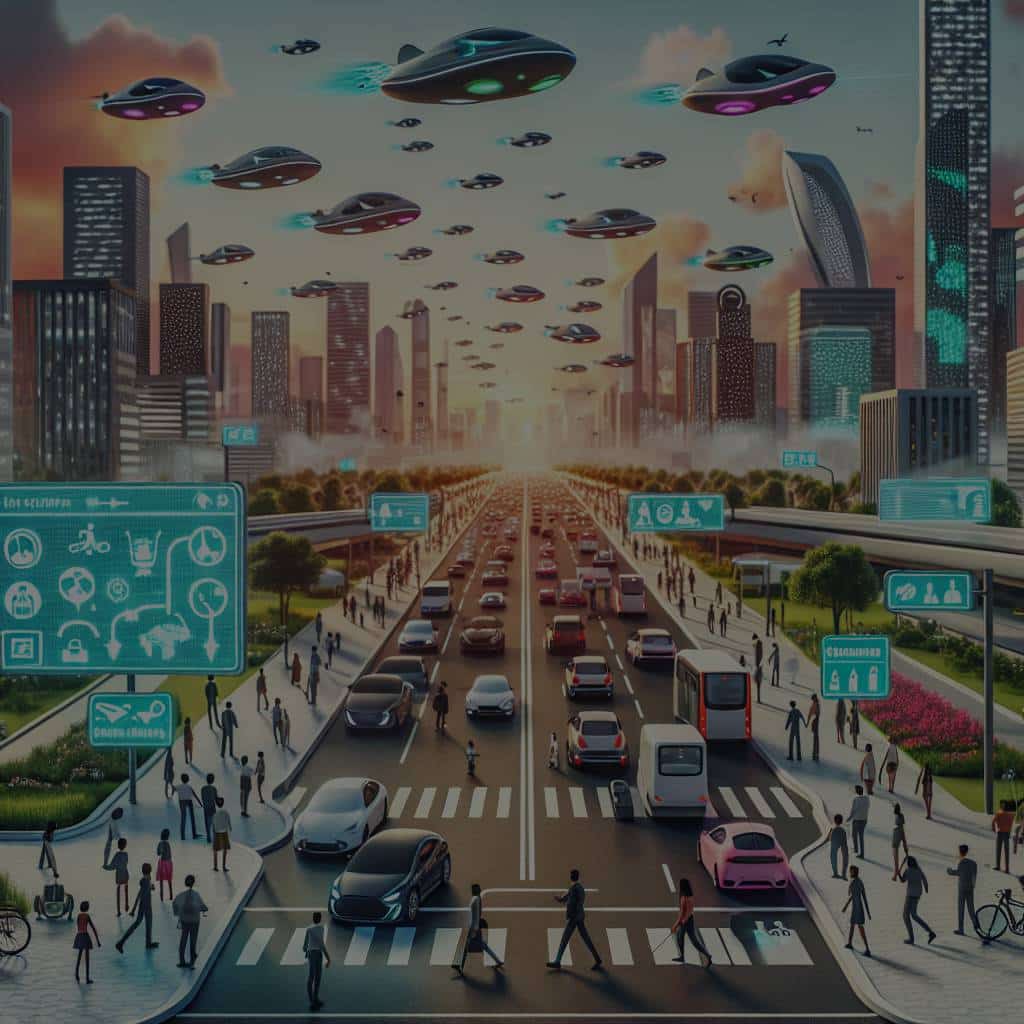How Might Intelligent Traffic Management Systems Alleviate Urban Congestion?

Urban congestion has transformed from a mere inconvenience into a full-fledged epidemic. The rise in urbanization and population growth has led to bustling city landscapes, teeming with vehicles, causing an unending traffic chaos. Modern city governments, with their smart city initiatives, are looking towards technological advancements in transportation infrastructure to address this problem. The answer seems to lie in Intelligent Traffic Management Systems. This article dives into the concept of these systems, and how they might help in alleviating the traffic congestion in our cities.
What is an Intelligent Traffic Management System?
An Intelligent Traffic Management System, or ITMS, represents a leap in traffic management technology. ITMS is a combination of information technology and communication systems, designed to improve traffic flow, enhance road safety, and reduce travel time.
Have you seen this : How do I generate images for tutorials or practical guides ?
In essence, an ITMS is a smart, data-driven approach to managing city traffic. It employs real-time data collection, advanced data analytics, and instantaneous response mechanisms to optimize traffic flow and reduce congestion. The system is able to monitor, analyze, and control traffic movement across the urban road network, thus providing a comprehensive solution to traffic issues that most urban cities face today.
How does ITMS Work?
An ITMS is powered by multiple data sources that feed into it, providing real-time information about the state of the urban road network. These sources include traffic cameras, vehicle detectors, GPS data from public transportation, and road sensors. This data is then processed and analyzed to determine traffic patterns, identify congestion points, and predict potential traffic jams.
Also to read : What Role Can Hyperspectral Imaging Play in Recycling Sortation Systems?
Once the system has a clear understanding of the city’s traffic situation, it can take appropriate actions to manage the traffic flow. These actions can range from adjusting traffic signal timings and suggesting alternative routes to drivers, to coordinating with public transport systems to optimize their service.
The key aspect of an ITMS is its ability to respond swiftly and intelligently to changing traffic conditions. This responsiveness is what sets it apart from traditional traffic management systems, which often rely on fixed timings and pre-set parameters, leading to inefficient traffic flow.
Key Components of an ITMS
A robust ITMS hinges on several critical components. These include:
-
Traffic Sensors and Detectors: These are the eyes and ears of the system, constantly monitoring the road conditions and providing real-time data.
-
Traffic Control Center: This serves as the brain of the system, where all the data is received, processed, and decisions are made.
-
Communication Network: This network connects all the components of the system, enabling real-time data transmission and swift action.
-
Traffic Signals and Signs: These are the system’s hands, implementing the decisions made by the control center on the road.
-
Public Information Systems: These disseminate information to the public, advising them on road conditions, alternative routes, etc.
Benefits of Intelligent Traffic Management Systems
The implementation of an ITMS provides a plethora of benefits. The most significant of these is the potential to alleviate urban congestion. By optimizing traffic flow through real-time adjustments, an ITMS can significantly reduce travel time and congestion.
Moreover, an ITMS can enhance road safety by identifying and managing potential road hazard situations. This can include managing pedestrian movement, controlling speed limits, and alerting drivers about road conditions.
Additionally, by reducing congestion and optimizing traffic flow, an ITMS can contribute to lowering vehicle emissions and improving air quality in cities. This leads to a healthier urban environment.
Finally, an ITMS can provide valuable data to city policy makers. This data can help guide infrastructure development plans, public transportation strategies, and urban development policies.
Challenges and the Way Forward
Despite its numerous benefits, the implementation of an ITMS is not without its challenges. These include high installation and maintenance costs, the need for extensive and reliable data networks, privacy concerns related to data collection, and the need for public awareness and acceptance of the system.
However, with the increasing sophistication of technology and a growing focus on sustainable urbanization, the adoption of intelligent traffic management systems is likely to rise. As cities around the world strive to become smarter and more livable, an ITMS presents a promising solution to the pressing problem of urban congestion.
Intelligent Traffic Management Systems in Real-World Applications
Various cities across the globe have already implemented intelligent traffic management systems, reaping tangible benefits and setting an example for others. For instance, Stockholm, the capital city of Sweden, has an efficient ITMS in place that has successfully reduced traffic congestion by around 22%, travel times by 14%, and has substantially cut down on vehicle emissions. On the other side of the world, Singapore’s smart traffic management system, designed to optimize traffic flow, has also received international acclaim.
Advanced cities such as London and Los Angeles have also adopted ITMS and have seen improvements in their traffic conditions. They use real-time data to adjust traffic signals, optimize public transportation schedules, and inform drivers about road conditions. Recent studies indicate these smart cities have seen a significant reduction in overall travel time and urban traffic congestion.
One standout example of ITMS usage is in Barcelona, Spain. Here, the system is used for more than just traffic flow optimization. It also manages the city’s public transportation system, ensuring efficient and timely service. Additionally, it provides real-time information to pedestrians about the best times to cross roads, contributing to enhanced pedestrian safety.
These real-world applications of ITMS clearly demonstrate that intelligent traffic management systems have the potential to effectively address urban congestion. It’s evident that with proper planning, implementation, and public acceptance, ITMS can significantly improve urban mobility and transportation infrastructure.
The Future of Intelligent Traffic Management Systems
As the world continues to urbanize and the strain on city transportation systems grows, the need for intelligent traffic management will only intensify. With advancements in AI, machine learning, and IoT technologies, the future of ITMS looks promising, with systems becoming more accurate, responsive, and efficient.
Looking ahead, we can expect ITMS to become an integral part of a city’s infrastructure. Advances in technology will likely make it possible for traffic management systems to predict traffic congestion even before it occurs, thereby taking preemptive measures to prevent it. Integration with autonomous vehicles could also pave the way for seamless, efficient transportation where traffic flow is optimized with minimal human intervention.
Moreover, innovative technologies like V2X (Vehicle to Everything) communication could significantly enhance the capabilities of an ITMS. This technology allows vehicles to communicate with everything in their environment – other vehicles, traffic signals, pedestrians, etc. Integrating this into an ITMS could enable more precise traffic management and further reduce congestion.
The implementation of ITMS in cities also aligns with the broader goals of creating green, sustainable environments. As ITMS can reduce vehicle emissions by reducing congestion and optimizing traffic flow, it contributes to the global efforts towards combating climate change.
In conclusion, intelligent traffic management systems hold the key to alleviating urban congestion. Although challenges exist, the benefits far outweigh them, making ITMS a viable, effective, and sustainable solution for our cities’ traffic woes. As we progress into a future where smart cities become the norm, ITMS will play a crucial role in shaping sustainable, efficient, and safe urban environments.
